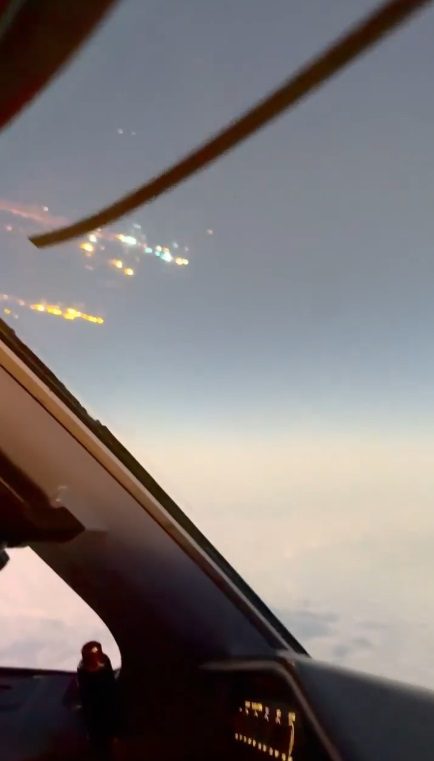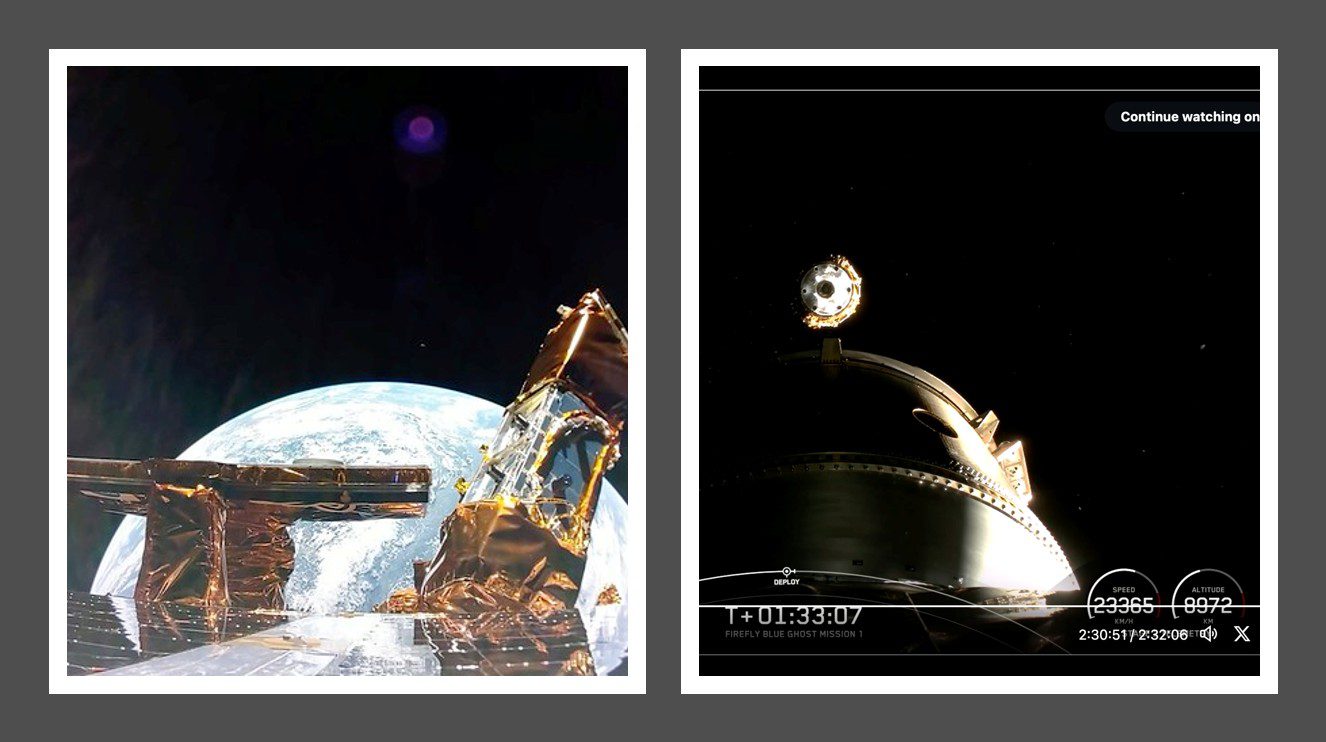2014 was an interesting space year in many ways. It had elements of great achievement, some notable failures, and confirmed some industry trends that are looking unstoppable.
Record breaking year for number of launched payloads
Driven mainly by commercial factors and the emergence of China as a new space world power, the Space Year 2014 had the highest number of attempted launches to orbit since 1994 with 92 orbital attempts. With a new “cold war” now underway, increased numbers of military launches are likely to increase launch numbers in the near future.
According to the Seradata SpaceTrak database, the 92 launches carried 302 “satellite” payloads – an all time record driven by the growth of very small nanosat/cubesat-class spacecraft, often as part of constellations. The trend for very small satellites has caused the average (mean) mass of spacecraft to fall dramatically. This trend seems set to continue with new large-scale nanosat/cubesat constellations now being planned.
Orbital maiden launches this year included the first flight of the Angara A5 (Angara A5-1L) and the sub-orbital launches of launch vehicles of the Angara 1.2PP and the GSLV 3.
With respect to nation states: Russia remains number one launch nation with 32 attempts,USA was in second spot with 23, while China was third with 16 flights. Europe flew 11 (figure includes Arianespace-operated Soyuz launches) for fourth place. Of the others, Japan flew 4, India 4, Israel 1 and International (Sea Launch) 1.
Launch failures were low but Proton continues to concern
Of course, there were launch failures during the year – five of which were due to a failure of the launch vehicle. In May, a Proton M Breeze M (PH3) failed to loft the Russian communications satellite Express AM-4R into orbit causing a US$217 million insurance loss in the process.
While it is a little unfair to call the Dnepr 1A launch in June a failure given the other 37 payloads made it, a small 12kg satellite BRITE CA-2 did fail to deploy from its launch vehicle due to a dispenser error.
In August, a Soyuz ST-B (Fregat MT) failed to put Galileo FOC FM01 and FM02 into the correct orbit, leaving the two satellites to use their own fuel to recover themselves to at least a partially operational position as best they could.
While Russia’s space authorities attempted to brush its launch undershoot under the carpet, there was another partial launch failure of the Proton M Breeze M launch vehicle in October with a lower than expected perigee and a slightly incorrect inclination. Thankfully, the Express AM-6 satellite carried enough fuel for its own thrusters to make this extra correction with no loss of lifespan – even though it took three months more to get itself into its operational position.
Much more cut and dried was the spectacular launch failure of the Antares 130 launch vehicle. The exploding rocket fell back to Earth near to the pad destroying the Cygnus Orb-3 (Deke Slayton) cargo craft going to the international space station, as well as 26 Flock 1D earth observation nanosats, and the Arkyd-3, RACE and GOMX-2 test satellites. Significant damage was also caused to the pad and surrounding buildings. Orbital Sciences Corporation dropped the faulty 1960s vintage NK-33 (AJ-26) rocket engine from that point on. Instead it has chosen another Russian engine, the RD-181, despite warnings that Russia may hinder its supply as it is threatening to do with the RD-180 used by the Atlas V. Orbital’s merger with ATK carries on despite this launch failure though it has had to order two Atlas V launches to make sure of getting its NASA cargo contract fulfilled.
Not launch vehicle related was deployment failure of the Sprite 104 Femtosat formation which failed to deploy from the Falcon 9 launched KICKSAT carrier satellite/dispenser due to fault on it.
Whether you count it as five or four launch failures out of 92 attempts, the 2014 year’s launch related failure rate was lower than average. Proton’s launch reliability continues to be a concern. Nevertheless, while Angara A5 had its debut this year, Russia seems in no hurry for it to replace Proton which should fly well past 2020.
Launch Orders and Construction Orders: SpaceX and Space Systems/Loral were the winners
Commercial launch orders tended to go to the big two launch providers. SpaceX led the field with nine bookings plus two Inmarsat Falcon 9 Heavy reservations, while Arianespace held its own with eight for Ariane 5 plus a named satellite confirmation of an earlier Eutelsat reservation. Its stronger than expected performance was due to its reduced prices for the smaller second position payloads on the Ariane 5. Arianespace also had two launch orders for Vega and one for Soyuz. There was single commercial launch contract for the Japanese H2A. One-time major contender, ILS, had a weak year with just two bookings for Proton which had launch reliability issues and launch opportunity restrictions. There were no orders registered for Sea Launch despite its successful return to flight. Full details of these orders are on the Seradata SpaceTrak database.
Europe finally decided to concentrate on its low-cost Ariane 6 in order to compete effectively, with all its manufacture being under one jointly-owned Airbus/Safran company. SpaceX intends to improve its competitive position by flying fully reusable Falcon 9 first stage and used some flights during the year to test elements of the concept.
With respect to satellite orders, the situation is more complicated. In the commercial GEO class Space Systems/Loral led the field with nine orders. Noting the success that others have had with constellations, Space Systems Loral managed to sign a multi-satellite construction order for Earth observation satellites from Skybox.
For Airbus (formerly Astrium) this transitional year was marked by a strong showing in Earth Observation, with six Metop satellites ordered plus Perusat. On the GEO comsat front the firm received four orders. It also benefited from science satellites being ordered including CHEOPS.
Thales Alenia Space had a good year. Already producing satellites for Iridium and Globalstar’s LEO communications satellite constellations, it managed to gain five GEO comsat orders plus a ground spare for Iridium.
When it came to operators, one major operator DirecTV was taken over by AT & T as the line between terrestrial and space communications continues to become blurred. There was also the emergence of some new regional operators with their own satellites, most notably Arsat, which managed to extract some major insurance concessions including having its satellites covered for launch plus life.
Space Insurers make money! (Just)
While there were some heart-stopping moments for some underwriters, overall the market made a small profit. Apart from the Express AM-4R launch loss at US$217 million, the other major losses of the year were: a beam fault on ABS-2 which is expected to cause a loss of US$214 million, and a solar array power failure on Amazonas 4A resulting in expected loss of US130 million. The total for these and other losses is likely to be circa US$655 million. According to broker estimates, the gross premium revenue is expected to be circa US$680 million, and as such, the market has just returned to technical profitability after last year’s small loss. However, after broker deductions and running costs are taken into consideration, the net position for underwriters as a whole is barely “break even”, although some individual underwriting firms will have done better than others, depending on their choice of risks.
Other space achievements – and disasters
Probably the most impressive space achievement this year was in the field of exploration with the rendezvous and landing of ESA’s Rosetta/Philae mission onto an actual comet (Comet 67p/Churymov-Gerasimenko).
NASA’s Orion space capsule successfully flew atop a Delta IV Heavy – proving its thermal protection, guidance and parachute splashdown landing systems. Nevertheless, while SLS and Orion development continues to go well (leading Russia and China to pursue their own SLS designs) the first unmanned flight of the Orion/SLS combination has now been delayed to late 2018 at the earliest.
China continues to make progress proving that it has the technology to send samples (and even humans) back to Earth. It bounced back from its Chang’e 3 Yutu rover partial failure to fly a Chang’e test capsule around the Moon, managing to re-enter and land it safely.
India gained plaudits from the space world as it successfully put its value-for-money Mars Orbiter Mission spacecraft around the planet.
Probably the most controversial decision made during the year was NASA’s decision to select two capsule designs (Boeing CST-100 and the SpaceX Dragon V2) to go forward for commercial crew funding – leaving the Sierra Nevada Dream Chaser mini-shuttle to fend for itself.
While not included as an actual space failure, the test flight failure that killed a pilot of SpaceShipTwo threatened to end Virgin Galactic’s commercial space enterprise.






